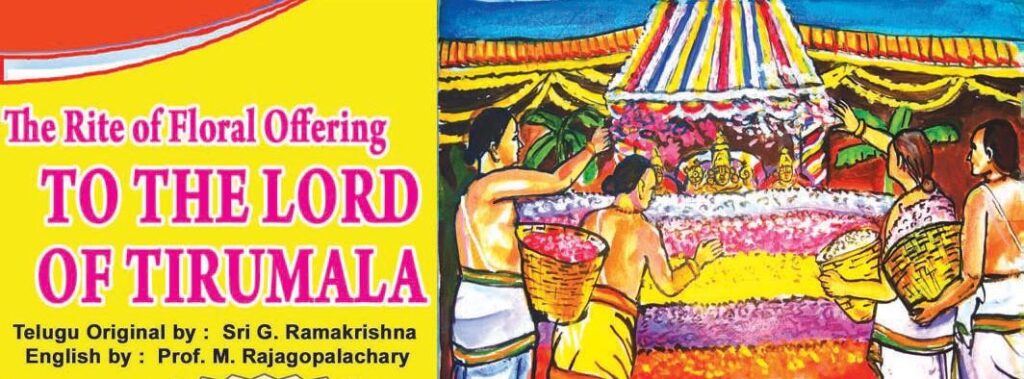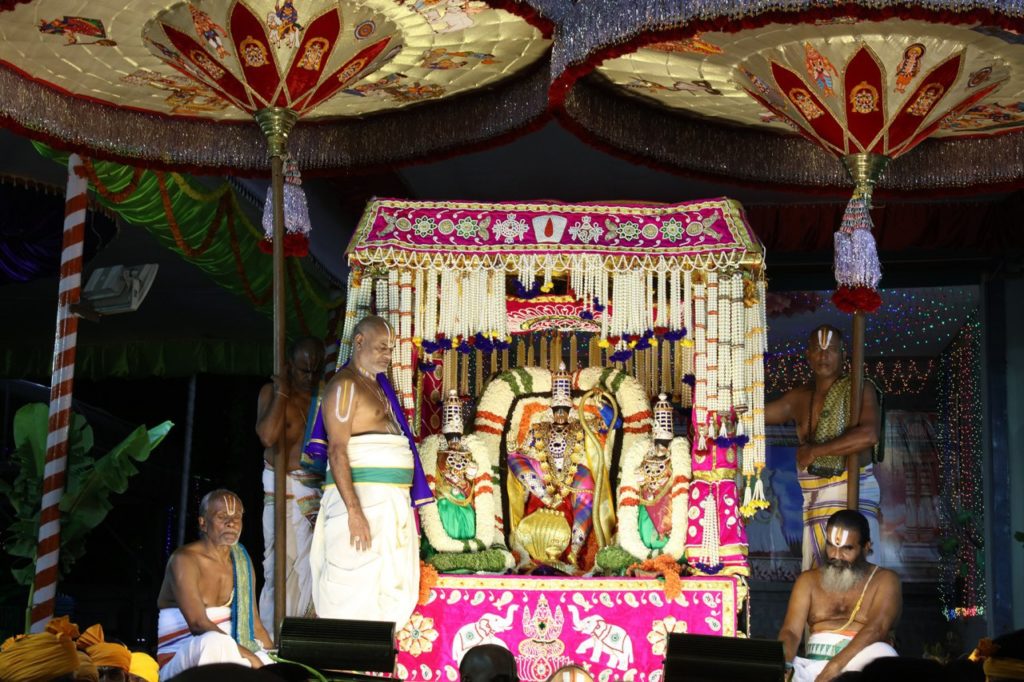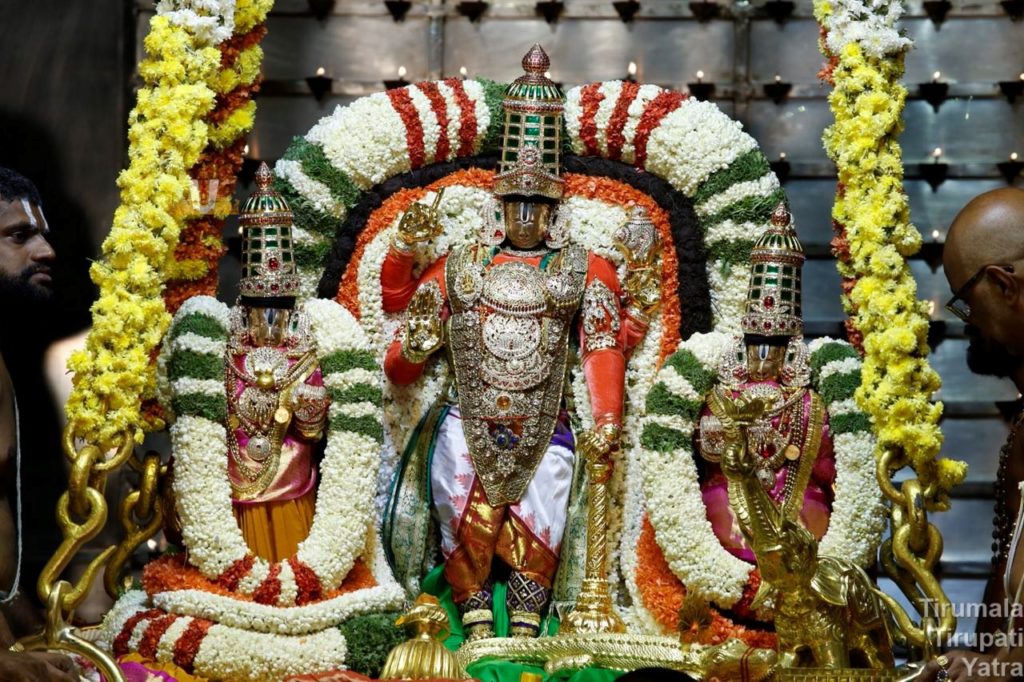Process of Pushpayagam
India is known as the land of Vedas. People of this country yearn to realize God through virtuous deeds ordained by the Vedas. Idol worship is one of the significant duties prescribed by the Vedas. Our saints have given form, name, and auspicious attributes to the amorphous God of the Vedas and prescribed the ritual of worship to the idol of the Lord made of stone, metal, wood, or mud in the name of agamas.
Agamas and Puranas have explicitly proclaimed that the Almighty manifests Himself on the earth in different forms to redeem people caught in the vicious circle of birth and death. Vaikhanasa agama states that Lord Vishnu alone is the Absolute Supreme Soul of the Vedas; Vaikunta is His abode and the only way to reach Him is worship with selfless devotion.
Rituals in Tirumala
All the daily rituals right from auspicious waking up (Suprabatha Seva) to reclining to bed (Ekantha Seva) and other special rituals at different times in the year like Brahmotsav, Pavitrotsav, Vasantotsav, Jyestabhisekam, Pushpayagam, etc are all conducted in Tirumala according to this Vaikhanasa Agama only.
The mode of worship of the Lord six times a day (shatkaalaarchana) prescribed by the Vaikhanasa Agama has the stamp of the Vedas.
Indescribable is the glory of the annual Pushpayaga among them.
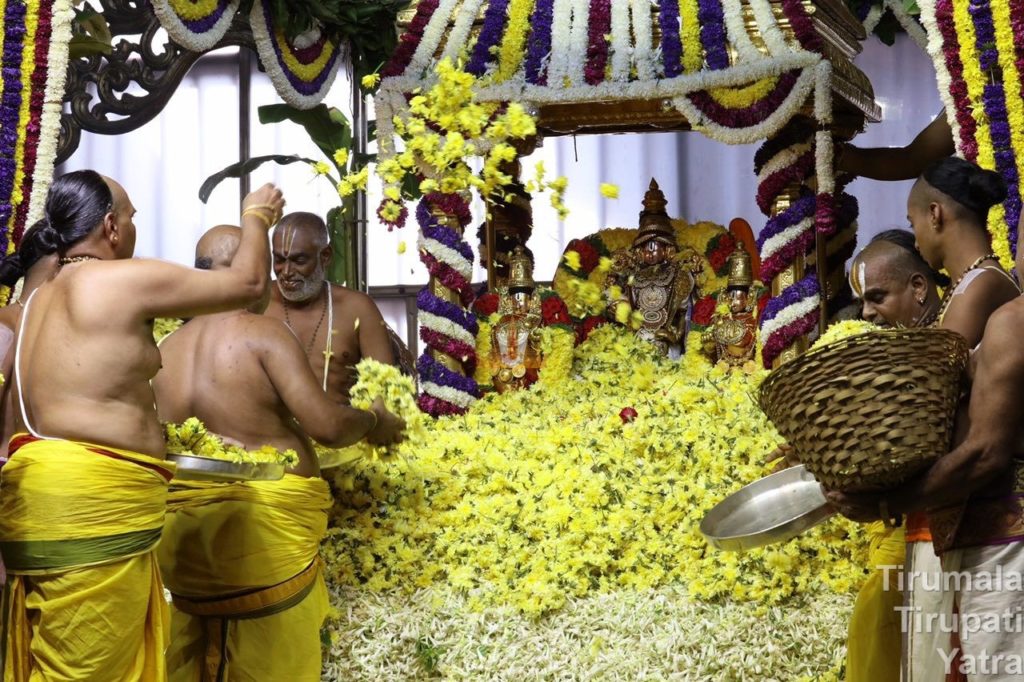
What is Pushpayagam?
Rituals conducted for the Lord according to the Agamas namely—
- Nityotsavas,
- Naimittikotsavas, and
- Kamyotsavas.
Dvadasha maaseshyekasmin maase abdam prati tatkaaleyaha kriyate sannityutsavaha!
Rituals conducted on a selected special tidhi (lunar day) or nakshatra are called Nityotsavas.
Services held for the Lord from early morning till night are called Nityotsavas i.e.,
- Waking up service,
- Garlanding Service,
- Worship with thousand names of the Lord, etc.
It is decided to conduct the Brahmotsavas in Tirumala in Kanyamasa in such a way that they conclude on the day of Sravana star. Similarly, Pavitrotsavas is held on the twelfth day of the bright lunar fortnight in Sravana month, while the bathing ceremony in Jyesta month (Jyestabhisekotsav) is held on the day of Jyesta star in Jyesta month.
The rite of Floral Offering (Pushpayagam) is held on the day of the sravana star in the Karthikamasa. All these are called (annual) nityotsavas. The rite of Floral Offering is an annual nityotsava. In this ritual, the best flowers of different kinds are mainly offered to the Lord. According to the Agamas, this is held to atone for the lapses committed knowingly or unknowingly in the course of Brahmotsavas.
Malayappa Swami with His Consorts
This is conducted during the daytime. A day before the day of the Sravana star in Tulamasa, the priest known as Kankanabhattacharya begins the ritual wishing for prosperity. On the day of the sravana star, Malayappa Swami with His Consorts are taken to the pavilion meant for Pushpayaga after the services of the waking up ceremony and others.
After special worship, an anointing ceremony (abhisheka) is conducted to the Lord with milk, curd, honey, ghee, coconut water, and fragrant water mixed with turmeric, sandal powder, saffron, rose water, and cuseus (vattiveru).
The Pushpayagam commences after worshipping duly the flowers meant for the Floral Offering.
Flowers Used
27 types of fragrant flowers are offered in this ritual.
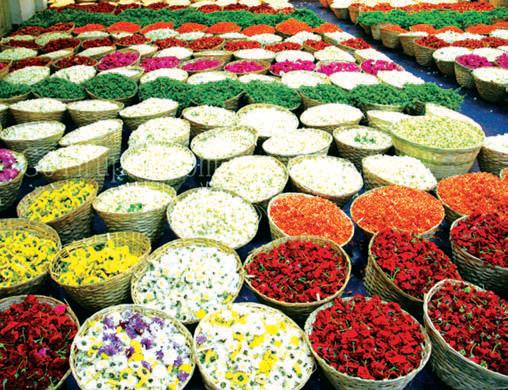
They are—
- the gold flower (champaka),
- jasmine (mallika),
- sacred basil (tulasi),
- white water lily (kumuda),
- oleander (karaveera),
- broad-leaved rose bay (nandyavarta),
- Flame of the Forest (palasha karnika),
- hibiscus (mandara), common flax (atasi),
- screwpine (ketaki or mogili),
- Spanish cherry (vakularjuna or pogada),
- white flower like tube rose (punnaga),
- vine-like plant with white and yellow flowers (madhavi),
- sweet marjoram (pinditaki or maruvam),
- Arabian jasmine (dvikarnika),
- a different variety of Arabian jasmine (bahukarnika),
- needle flower (kuruva),
- cobra saffron (nagavriksha),
- firecracker (kanakam),
- golden rain flower (karnikaram),
- orange-red midday flower (bandhooka),
- black basil (krishnatulasi), sunflower (suryananda),
- arjun (kakubhodumbaram), allamand (kankani),
- shankha pushpa or butterfly pea (agrakarnika),
- Roja (Rose of different colours) and
- other seasonal flowers like kaalananda etc.
Three or four-coloured flowers are regarded as superior in quality; two-coloured flowers are medium and single-coloured flowers are inferior. Only fragrant flowers are to be used in this service. Agamas lay down that the lotus flower is regarded as the best among all flowers.
As per the Vaikhanasa Agama, worship with white flowers yields peace; yellow flowers strength; blue flowers victory over others; red flowers like palasha and pinditaki fearlessness. All these flowers are collected with ardent devotion. We are not supposed to use flowers that are dry, unclean and without fragrance or with fragrance are not used.
2000 Kilos of Flowers from Nearby States
Flowers are supplied by the devotees from Tamilnadu and Karnataka states. Priests, Jeeyarswamis, Temple officials, devotees, and staff get these 27 types of flowers weighing about approximately two thousand kilograms in procession to the prescribed pavilion in the temple amidst auspicious music and recitation of Veda mantras.
The priest proclaims the sankalpa, the purpose of sacrifice as the atonement of lapses known and unknown committed in the process of Brahmotsavas besides the welfare of the world. Amidst the recitation of Vedas. The priests offer different types of flowers one after the other at the holy feet of the Lord.
Huge heaps of flowers are arranged decoratively around Malayappa Swami along with Sridevi and Bhudevi.
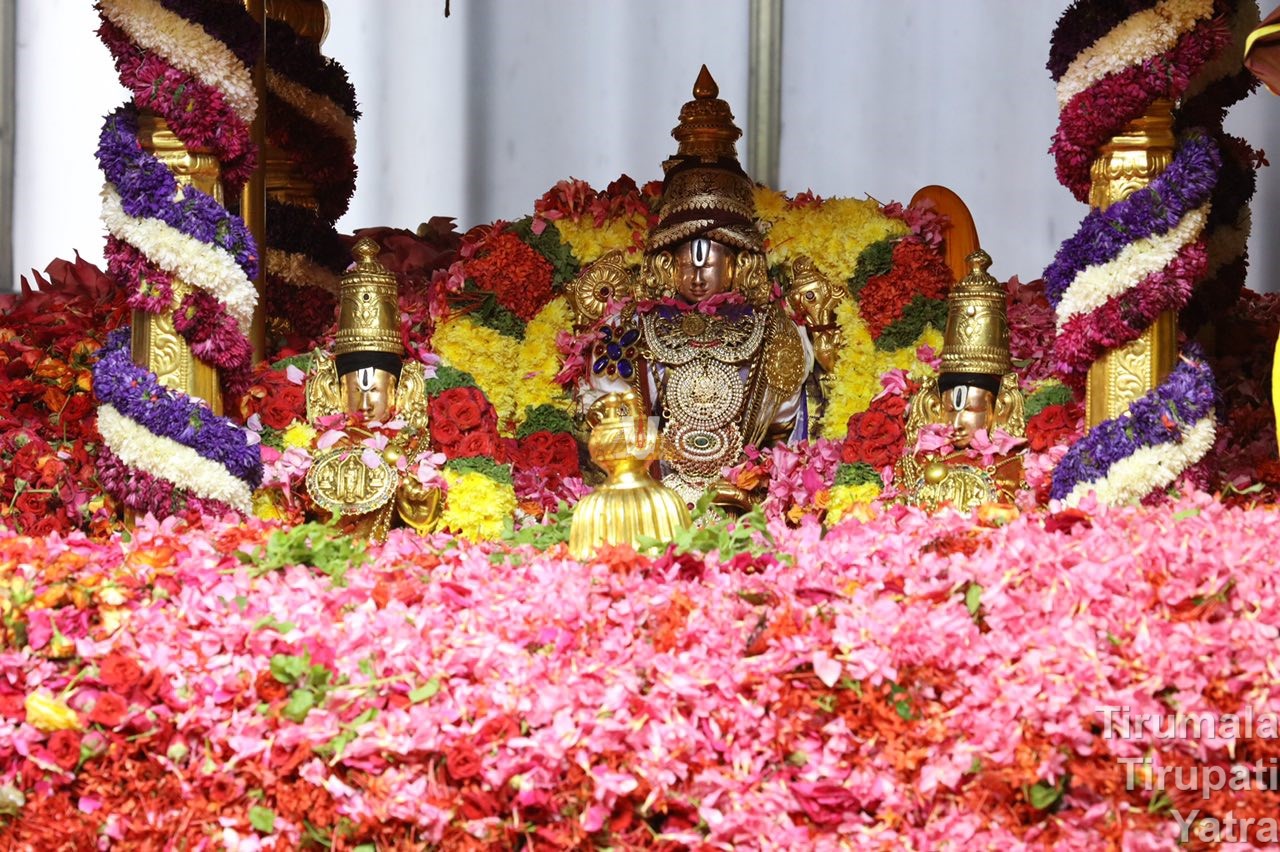
The Lord is worshipped as He is surrounded by heaps of variegated flowers right from feet to neck. After placing each kind of flower, holy water is given to his hands (arghya), feet (paadya), and mouth (achamana), and special Naivedyams are offered to the Lord. Auspicious camphor light is waved to the Lord.
Services rendered with stately canopy, hand fans, mirror, dance, singing keerthanas, instrumental music, recitation of Vedas, epics and spiritual sciences, prabandhas, panegyrics are regarded as regal services as per the Agamas. These services are offered in Tirumala on a grand scale as a feast to the eyes of the devotees.
This Floral Offering Rite not only atones for the lapses committed in the earlier Brahmotsavas but also yields the best results to the devotees who witness it.
